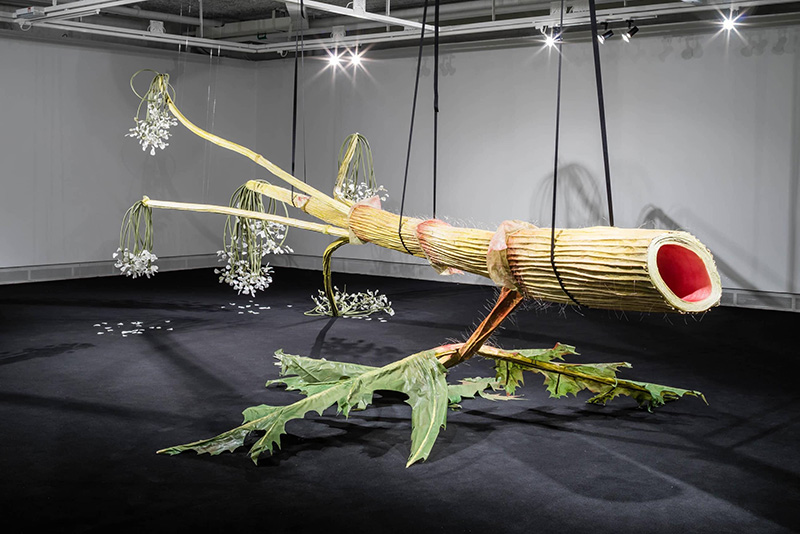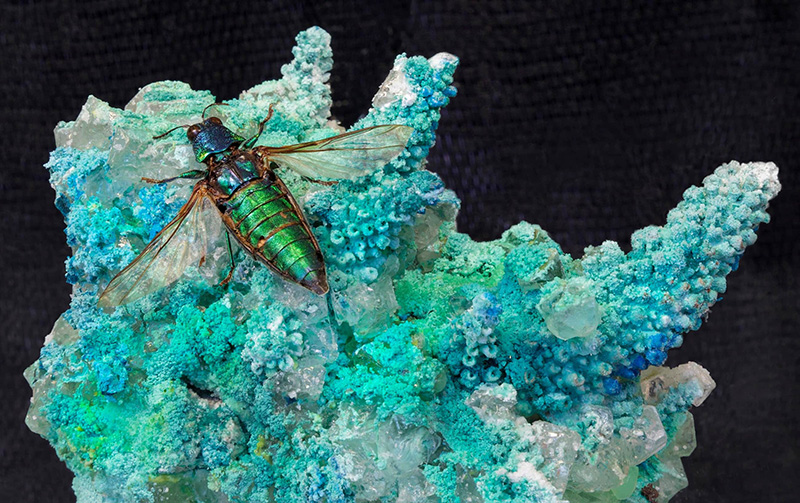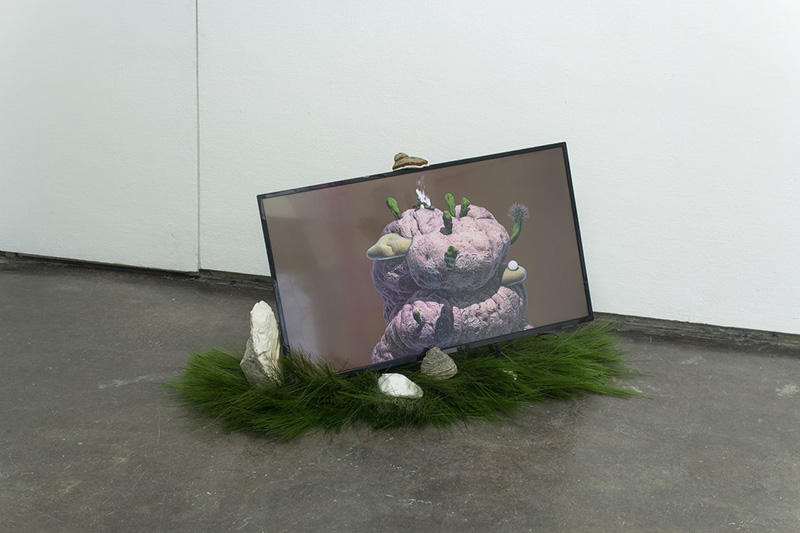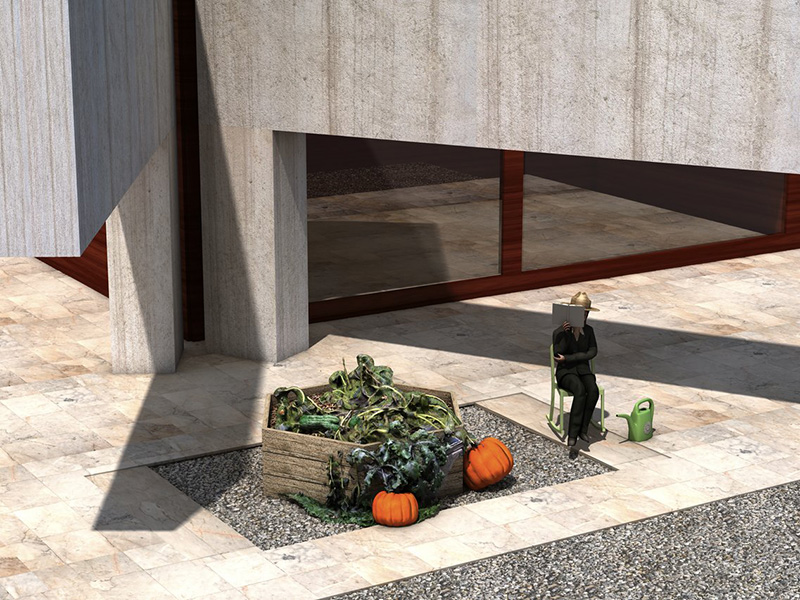by Julian Bachmann // Mar. 23, 2019
While some changes to climate are gradual and predictable, others are more difficult to foresee. Those sudden and abrupt tipping points have severe consequences for all living organisms and, once set in motion, cannot be undone. The Nordic Pavilion’s exhibition ‘Weather Report: Forecasting Future’ during the 58th Venice Biennale is set to deal with the pressing issue of climate change and the challenge of forecasting future patterns of global warming. How to gain a sense of the scale of this issue? How can we nurture collective forms of understanding temporal futures through artistic means?

Ingela Ihrman: The Giant Hogweed, 2016, installation view at Tensta konsthall, Stockholm // Photo: Jean-Baptiste Beranger, Courtesy the artist
Through the works of artist duo nabbteeri (comprised of Janne Nabb and Maria Teeri from Finland), Ane Graff from Norway and Ingela Ihrman from Sweden, the Nordic Pavilion presents perspectives that foreground the reciprocity of human culture, technology and the environment. They all work in various media, including installation, sculpture, assemblage, performance, digital media and text, and link different disciplines such as art, science and humanities, often collaborating with specialists from particular fields. They strive towards an egalitarian coexistence between humans and nonhumans, rejecting the privilege of human existence over the existence of nonhuman objects. As such, their work is attentive towards the elusive reality of microorganisms and other nonhuman elements.

Ane Graff: Untitled, 2018, copper, iron and potassium alum sulphate growths on deep sea coral, Jewel Beetle (Chrysochroa vittata), 10 x 15 x 10 cm // Photo: RH studio, Courtesy the artist
Graff, for example, ties microbiology and chemistry with perspectives from feminist new materialism, a strand of philosophy that encourages to rethink prevailing models of ontology, epistemology, art and politics. Her sculptures challenge dominant classifications and seemingly stable structures, making manifest the way in which the human body is exposed and subjected to the agency of bacteria and the consequences of environmental pollution. In Ihrmann’s practice, plant-shaped sculptures grow, flower and wilt. She draws inspiration from the environmental wave of the 1970s and connects those endeavours to perspectives from gender theory. Through performative elements her installations come to live questioning the relationship between different forms of life by questioning concepts of belonging and loneliness.

nabbteeri: Blackout, 2018, 3D animation, Mustarinda paraphernalia, bristles animation installation view from Titanik, Turku // Photo: nabbteeri, Courtesy the artists
Lastly, nabbteeri always interacts with their surroundings, their works unfolding as a mapping of the relations between an environment, its materiality and its inhabitants. Particularly interested in coexistence and recycling, nabeeri grounds their investigations in tiny lifeforms like fur beetles and different rotting agents.

nabbteeri: Ethnographies of a homespun spinelessness cult and other neighbourly relations: Compost, 2019, 3D model for the installation // Photo: nabbteeri, Courtesy the artists
Rather than presenting facts about climate change, by bringing together these artists the exhibition seeks to encourage a reflection about personal lifestyle choices by fostering attention towards other species and environmental phenomena that directly impact our lives.


























